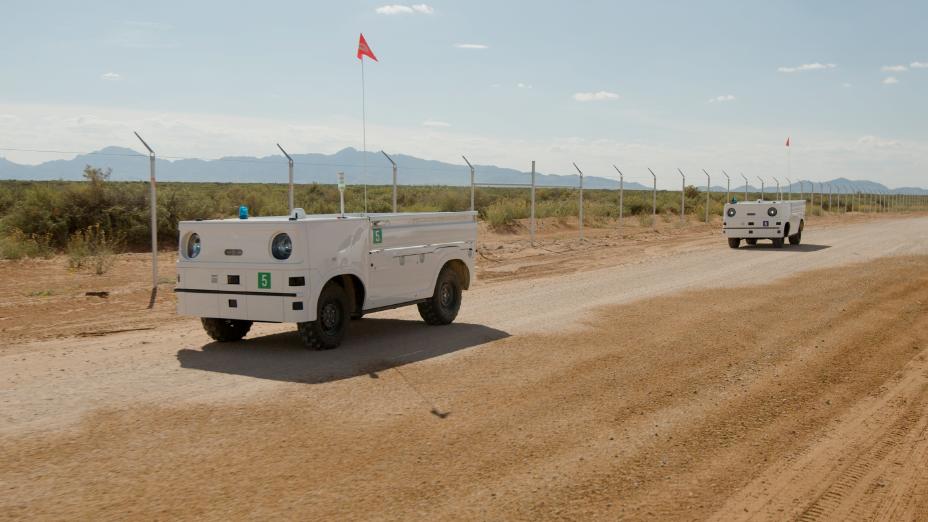The second-generation prototype of Japanese automaker Honda’s fully electric Autonomous Work Vehicle (AWV) has successfully completed a month-long field test at a large-scale solar energy construction site in New Mexico.
Looking almost like an unsuccessful Disney movie robot, the Honda AWV performed a range of functions at solar construction site operated by global EPC company Black & Veatch.
Black & Veatch operated several of the AWV in a range of construction use cases across the month-long field test which saw the AWV doing everything from towing to transporting construction materials, water, and other supplies to pre-set destinations across the work site.
First introduced back in 2018 at the Consumer Electronics Show in Las Vegas, the Honda AWV is a combination of the company’s rugged and durable off-road side-by-side platform paired with emerging advanced autonomous technology, resulting in a work vehicle that Honda hopes will be able to be deployed at a range of work environments.
“With our test partner, Black & Veatch, Honda was able to demonstrate the performance of our rugged all-electric Autonomous Work Vehicle prototype in a large-scale construction environment,” said Kenton Williams, US project lead for the Honda AWV.
“We believe the Honda AWV has the potential to bring greater efficiencies, higher levels of safety and better environmental performance to the construction industry, and to other industries seeking an autonomous off-road solution.”
Complete with a suite of sensors that allows the AWV to work autonomously, the vehicle uses GPS for location, radar and lidar for obstacle detection, and stereoscopic (3D) cameras for remote monitoring – which also means the AWV can be operated remotely.
The Black & Veatch solar construction site served as a prime candidate to validate the Honda AWVs testing, with solar panel support structures laid out in a grid pattern at regular intervals, allowing the AWV to be tested for stopping at precise points along a pre-set route.
To aid the AWVs manoeuvring around the construction site, Honda produced a high-definition map of the 1,000-acre site. This map allowed Black & Veatch operators to set precise start and stop points for multiple Honda AWVs using a cloud-based app interface that runs on tablets and PCs. The successful testing saw the AWVs deliver materials and supplies along a calculated route and were capable of stopping within centimetres of pre-set locations.

“Black & Veatch’s pursuit of construction innovation and safety on job sites has led us to this relationship with Honda,” said Mario Azar, president of Black & Veatch’s global power business.
“With our leading market position in solar power, the testing of this new autonomous work vehicle aligns with our focus on advancing the industry through new and innovative ways to work at project sites.”
The Honda AWV testing also provided an opportunity to demonstrate the viability of its battery system in energy-intensive situations and high-temperature environments. Providing up to eight hours of operation, the AWVs carried payloads of nearly 900 pounds, and in a separate instance towed a trailer carrying over 1,600 pounds.
Joshua S. Hill is a Melbourne-based journalist who has been writing about climate change, clean technology, and electric vehicles for over 15 years. He has been reporting on electric vehicles and clean technologies for Renew Economy and The Driven since 2012. His preferred mode of transport is his feet.

